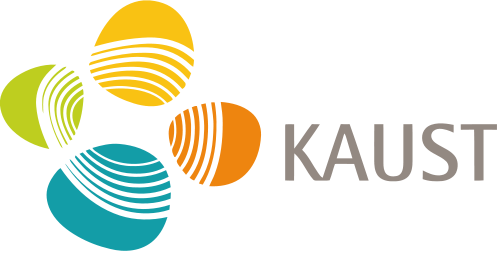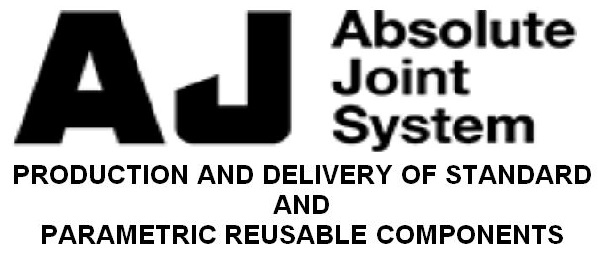Update: Please see venues for workshop meeting point (meeting at 8:30 on Saturday, 20 September 2014).
You may register for workshops independently from the conference.
Workshops
List of AAG 2014 workshops:
WORKSHOP 1: RhinoPython library to generate grid-structure on double curved surface by Andres Sevtsuk and Raul Kalvo (Singapore University of Technology and Design)
Places left as of 2014-09-18 11:00: 4 of 12
Date: 20–21 September 2014 (09:00 – 18:00, Saturday – Sunday)
Abstract: The workshop will be focusing on how to generate double-walled grid structures on regular and irregular (n-gone) networks (including mesh). This method allows participants to generate a wide variety of complex structures, which may be covered so that only flat material and only 3axis cutters (including laser cutters and water jets) are used. This method can be applied for constructing scale-models as well as full-scale architectural structures (for example, see the SUTD Gridshell https://vimeo.com/7527906) Participants will get a comprehensive overview of how double-walled grid structures work and where and how to apply the given structural solution in a design process. During the workshop we are using Rhino3D and RhinoPython and developed library for grid structures. Participants will get overview of graph theory and its application to 3D geometry and object-level data binding in Rhino3D.
WORKSHOP 2: First Person Hologram by Gregory Epps (Founder, RoboFold / Robots.IO), Shajay Bhooshan (Zaha Hadid Architects (CoDe) / AA DRL Unit Master), Florent Michel (Lead Software Developer, RoboFold / Robots.IO)
Places left as of 2014-09-18 11:00: 6 of 12
Date: 20–21 September 2014 (09:00 – 18:00, Saturday – Sunday)
Abstract: The field of projection mapping has been demonstrated to have striking effects through the combined video editing, motion capture, computer graphics and robotics, no more so than in the work of Bot and Dolly. Their recent video entitled ‘Box’ combined these fields to stunning visual effect, but could only be viewed through the lens of a camera, as all focal points in the projection mapped images were focused at the camera lens. This workshop proposes bringing the effect of close proximity projection mapping (within a small room) to a real world user. The projection will update the perspective the users’ focal point in real time by using a Kinect camera based sensor system for head tracking. In order to successfully document the process, a 6-axis industrial robot with a camera mounted on it will re-run the head movements, recording the viewer’s experience. Participants will propose new ways to interact with the system and test their ideas using tools in Maya and Grasshopper.
WORKSHOP 3: Custom Evolution – Geometry of Material and Function by Robert Vierlinger (University of Applied Arts Vienna, Bollinger+Grohmann Engineers), Clemens Preisinger (University of Applied Arts Vienna, Bollinger+Grohmann Engineers)
Places left as of 2014-09-18 11:00: 0 of 15
Date: 20–21 September 2014 (09:00 – 18:00, Saturday – Sunday)
Abstract: Since the digital age, how we design has become as important as what we design, when the rise of open digital systems and the computational cloud increase the possibilities for a human designer to benefit from augmented intelligence. In that sense, karamba is a powerful tool for evaluations and generations on the materialized behavior of geometry. With octopus.E we are now introducing tools to enable multi-objective pareto-optimization with novel modes of flexibility, complemented by plug-ins for iterative design strategies with the power of distributed computing. We want to unfold the black boxes of search and optimization and expose the inner logics for specialized yet quick adaptation. Participants will get an introduction to parametric structural analysis with karamba, and learn to quickly create their own high-performance parallelized optimization routine within Grasshopper. We will instruct participants how to easily produce, calibrate, operate and hack their own pipelines for geometric search and optimization.
WORKSHOP 4: Parametrize this – a new approach for designing panelisations. by Mathias Höbinger (Evolute, Vienna University of Technology) and Alexander Schiftner (Evolute),
Places left as of 2014-09-18 11:00: 0 of 15
Date: 20 September 2014 (09:00 – 18:00, Saturday)
Abstract: Isoparametric curves of surface patches have long been used as a versatile design tool, albeit with typically very strong limits on the influence of the designer and the complexity of the surface. A new toolset by Evolute based on recent research results allows designers to create global parametrisations on shapes of arbitrary topology and complexity by simply specifying intended isocurve directions in selected areas. Since these tools are based on very recent scientific work, this workshop will help explore the potential of this novel method, and test its ability to fulfill different design intents and manufacturing constraints. Participants will learn how to efficiently explore parametrisation and panelisation options for complex architectural freeform surfaces using intuitive and simple modeling tools. They will gain insights into a novel, user guided but fully automatic method for surface parametrisation and a number of its use cases.
Participants are encouraged to bring their own design surfaces to the workshop and apply the new method to them.
WORKSHOP 5: Form-finding of twisted interlaced structures by Sina Nabaei (Chair of timber constructions, IBOIS, EPFL, Switzerland) and Ass. Prof. Dr. Olivier Baverel (Navier Research Center, ENPC, France)
Places left as of 2014-09-18 11:00: 4 of 12
Date: 20–21 September 2014 (09:00 – 18:00, Saturday – Sunday)
Abstract: The workshop investigates form-active structures integrating three key notions: (i) structures made from actively twisted strips, (ii) interlaced configurations made from flexible strips/panels and (iii) thin shell curved structures generated by deforming an initial reference surface mesh using handle points located on it.
A hybrid simulation engine is offered combining flexible rod and thin shell physics-based models in order to virtually buckle flexible clamped strips into an Elastica of a given length and span, twist these Elastica strips at either ends and interlace them according to a design pattern. The result will be a curved form-active structure where the geometry comes from the assembly logic.
We use Rhino3D and Grasshopper installed on Window 7 64-bit as the framework to run our physics-based simulation components. Participants are encouraged to bring their own interlaced pattern or surface deformation logic to be form-found during the workshop.
WORKSHOP 6: Tessellated Flexible Surfaces by Tomohiro Tachi (University of Tokyo), Daniel Piker (Foster+Partners, McNeel), Ass. Prof. Dr. Duks Koschitz (Pratt Institute, New York), Yusuke Oono (noiz architects)
Places left as of 2014-09-18 11:00: 0 of 20
Date: 20–21 September 2014 (09:00 – 18:00, Saturday – Sunday)
Abstract: The workshop deals with origami tessellations and kinetic tiling patterns that form freeform and expandable surfaces. The patterns are inspired by and generalize the 1960s work by Ron Resch, a pioneering artist / researcher in the field of computational origami and architectural geometry. We will introduce the geometric construction of such patterns, their computational generalization to a freeform surface, and their implementation as a continuous corrugated sheet of paper or kinetic tiling patterns that hinges at its corners. The workshop integrates lectures and hands-on design and fabrication activities, through which the participants can comprehend the basic geometric concepts and explore their versatile applications for different design contexts.
WORKSHOP 8: Generative Syntax in Architecture and Urban Design by Richard Schaffranek (Vienna University of Technology), Pirouz Nourian (TU Delft)
Places left as of 2014-09-18 11:00: 7 of 15
Date: 20–21 September 2014 (09:00 – 18:00, Saturday – Sunday)
Abstract: There are a few theories that describe and explain the role of spatial arrangement on the social interactions of people in built environments, best known of which is called Space Syntax. The term syntax, taken from linguistics, here refers to the [spatial] structure of the whole, as opposed to morphology, which looks at the qualities of individual items. Using these theories, we can analyze existing spatial configurations and in a way measure their socio-spatial performance. However, theories and methods for systematically generating spatial arrangements of certain properties are rare or not put into practice. Combining analytic theories (mostly based on graph theory) with the generation of geometry is at the core of the workshop. In this workshop, we will introduce computational methodologies that can help in generating spaces with known syntactic properties. Three toolkits and methodologies will be introduced: SpiderWeb, Syntactic and Configurbanist.
WORKSHOP 9: Programming Customized Design Tools for Architecture, Engineering and Fabrication : by Peter Mehrtens (Architect, Head of Computational Design @ BEMO SYSTEMS Germany)
Places left as of 2014-09-18 11:00: 5 of 12
Date: 20–21 September 2014 (09:00 – 18:00, Saturday – Sunday)
Abstract: This workshop is an introduction to expanding out-of-the-box parametric cad applications to customized toolsets with a focus on geometric methods for architectural design and manufacturing.
The classroom style workshop is aimed at architects, engineers and designers who are interested in algorithmically processing geometric entities by means of own methods or functions. It is an introductory workshop on the borderline where the architecture-engineering-construction-branch meets the basics of programming.
Participants will learn concepts of object oriented programming and essential syntax of C# to endeavor into personally extending parametric toolsets. The workshop will focus on introducing the .NET language C# and the Software Development Kit (SDK) RhinoCommon to the participants.
Throughout the workshop we will switch between step-by-step explained code samples, compact summaries of underlying concepts and simple but effective geometry generation and manipulation tasks. By the end of the workshop participants will have learnt the essentials to write, debug and compile Custom Components for Grasshopper utilizing both own code as well as available libraries.
WORKSHOP 10: Prototyping optimization process in relation to solar analysis by Judyta Cichocka, Piotr Halczuk, Marcin Kosicki (LabDigiFab, Wroclaw University of Technology)
Places left as of 2014-09-18 11:00: 10 of 15
Date: 20 September 2014 (09:00 – 18:00, Saturday)
Abstract: Contemporary architecture needs to be smartly designed. Multiple requirements from different environments, which designs should meet, seems to be often beyond human cognition. One way of exploration of the countless number of possible solutions may be the application of genetic and evolutionary algorithms into design process. The evolutionary solvers obtainable in the design systems reflect the principles of the evolution found in nature. By working in tandem with them architects can far more easily go through the decision-making process and achieve optimal designs.
One-day workshop will investigate the application of the genetic algorithms in the optimization of architectural designs in relation to solar analysis. The complex attitude explore many problems related to solar analysis: from those in the urban scale, through the phototropic geometries and structures to the photomorphogenesic panels systems.
We are going to use Rhino, Grasshopper, evolutionary solvers, and further plug-ins.
WORKSHOP 11: Design Process of Buildings with Complex Geometries by Benjamin Schneider, Thomas Pachner, Marko Tomicic (all Advanced Geometry Engineering Waagner Biro Stahlbau AG)
Places left as of 2014-09-18 11:00: 10 of 20
Date: 20 September 2014 (09:00 – 18:00, Saturday)
Abstract: The transfer from an architectural concept into the built reality of a complex freeform structure necessitates an intense collaboration of geometrical and structural engineers as well as knowledge about materials and production management. Participants of this workshop will get insight into the geometric design process at Waagner-Biro by means of a typical example. Each step of the process will be explained in reference to the roofing of the Great Court in the British Museum that has been completed by Waagner-Biro in 2000. To get a better understanding of the practical relevance of the illustrated procedure we will also have an excursion to the British Museum and have a detailed look at the roofing of the Great Court.
































